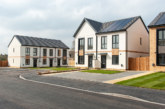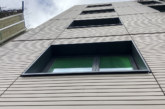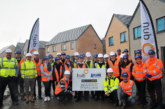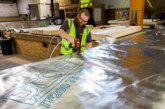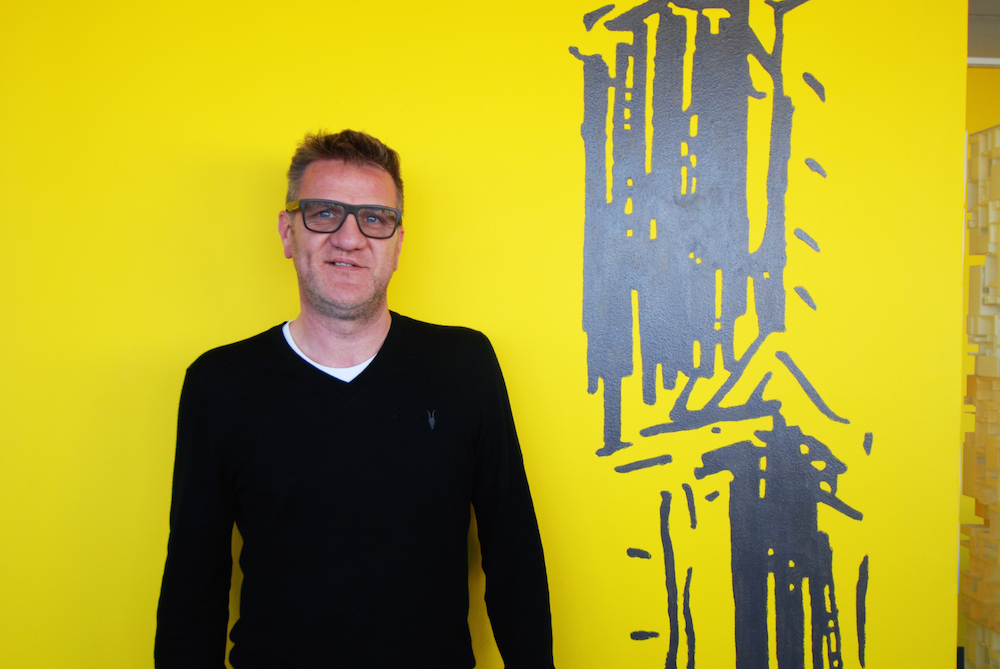 LABM speaks to Richard Hyams, Director of astudio, about tackling the housing crisis, the use of offsite construction on council and housing association projects and the amodular building solution the architecture practice has developed.
LABM speaks to Richard Hyams, Director of astudio, about tackling the housing crisis, the use of offsite construction on council and housing association projects and the amodular building solution the architecture practice has developed.
What would you say are the main challenges to the wider adoption of offsite construction on council and housing association projects, and what do you think would help facilitate greater uptake?
There are several answers to this. Some of it revolves around planning and a lack of understanding of modular but the Government is looking at an offsite manufactured quota, so effectively looking to construction firms and examining what percentage of their construction is manufactured offsite. If you get a really high quota, your project may be seen more positively than with a low quota. We are certainly finding it easier to get support for modular because the Government is getting behind it now.
Another factor is the manufacturing process. Each manufacturer builds components differently from another. There is no standardisation and component systems are not compatible from one place to another. That creates problems from a design perspective because the offsite manufacturer might not be able to build something exactly to the architect’s design. If the design is not optimal for the factory it starts to become expensive compared with onsite construction. Where economics drive projects, construction firms are not going to use offsite manufacturers for the sake of speed if it costs significantly more to do. But now offsite manufacturing is becoming more competitive as uptake among construction firms is growing.
With government funding more relief on grant projects that use offsite technologies it will clearly help the economics. But there is still a problem in that if an architect designs a building to be built by manufacturer and the manufacturer goes bust halfway through a project, what do they do until there is greater standardisation of components across the industry? That’s what we are trying to do at the moment; we have a number of different manufacturers our system can drop in to. That’s the problem that needs to be overcome. If you compare to traditional bricklaying, this is still seen a robust form of building. If a bricklayer goes bust, you can find another bricklayer. Or your plasterboard man does not turn up one day; you can get another plasterboard team in to do it. The biggest problem with an offsite manufacturer at the moment is 100% of your project is reliant on that one manufacturer. Until the industry starts to standardise itself this will never be resolved, unless you’re like us and can work across many different manufacturers. That’s our angle on it.

What do you think are the biggest challenges when it comes to tackling the housing crisis?
The biggest challenge to the housing crisis is capacity. To put it simply we just are not building enough homes. There is not capacity in the market to meet the demand, how can you build 300,000 homes a year? Everyone already says to me “aren’t you worried about the competition?” Not at all, everyone needs to be doing everything in order to address this gap in provision.
What role do you see modular building solutions playing in helping to address the housing crisis and in which areas of the market do you think modular construction can have the biggest impact?
This is a question of scale. What modular can do is deliver to scale. The minute you do this, the price of offsite construction comes down. Modular can unlock the capacity problem. What that means is you can then start to align with a number of manufacturers. You cannot put all your eggs in one basket. There are two areas of the market I think modular can best tackle. The first is affordable housing, this is because it is legislated for in terms of the building specifications and requirements. So modular can help to alleviate the immediate homelessness problem. The second area is private rented sector accommodation. Different architects have their own particular style that they want to deliver and that is repeatable. This best works in parts of the market which are not unique, so not bespoke one-off builds, but mass production with similar high quality outcomes.
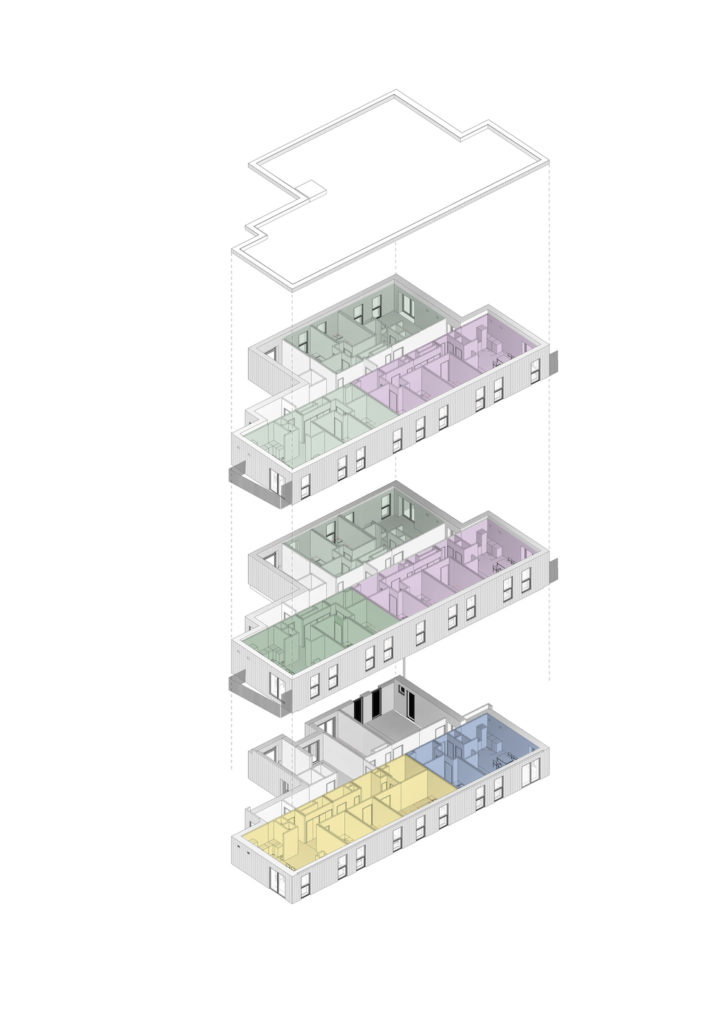 In August 2018, astudio launched its propriety modular building solution, amodular, in partnership with Be First, the London Borough of Barking and Dagenham’s regeneration company and modular manufacturer Rollalong. What prompted you to do this?
In August 2018, astudio launched its propriety modular building solution, amodular, in partnership with Be First, the London Borough of Barking and Dagenham’s regeneration company and modular manufacturer Rollalong. What prompted you to do this?
We have a research team in the practice and wanted to test how there might be a better way to solve the housing crisis. We were as a firm suffering from the same London problem that a lot of other companies experience where staffs were moving out of London and leaving the practice as a result. So we ourselves had a direct need to try to think of a solution to the housing crisis because we were being affected by it. But also as architects, we felt the need to do a social good because of the knowledge and expertise we have in the market. So we decided to put principles into action and see how we could reinvent how housing could be constructed and delivered. That’s why we did it, so we can change the way people build homes.
Prior to this project, have you worked with Be First and the London Borough of Barking and Dagenham and Rollalong previously, if yes, can you give details
We had never worked with Be First before. With Rollalong we had been in conversations for a few years prior to this project but had never worked with them on another project.
Before developing the amodular approach, what was your experience of designing housing schemes using modular building technology?
I wouldn’t say I have a housing background. Most of the projects I have worked on started in offsite manufacturing using building components such as double curved concrete surfaces, having them built in the factory and delivered on the back of trucks through to façade panels and component parts of buildings. So, I am used to the offsite manufacturing design principles. It was a natural step to see how we can begin to design homes because they are quite formulaic in how they work. A bedroom only needs to be a certain uniform size, so why aren’t we building bathrooms in factories and changing the finishes offsite just like you can a car? When you choose your car, you choose whether you want air conditioning, leather seats and sports engine inbuilt. If you want to go into a bathroom and say “I want marble on the floor and glass on the walls”, why can’t you? That’s where we thought we could start to use our expertise in offsite construction to help influence how we do housing.

What are the key features of the amodular concept and what differentiates it from the other modular solutions currently available?
Ours is made up of five module types. This is a deliberately limited number of module types in order to achieve maximum repetition. It gives us enormous flexibility in how we change the tenure, the mix of studios and one, two and three bed homes. So, a factory likes that because all they get is the same number of components going through it as opposed to 500 different module types. The materials we use are lightweight in terms of movement and are designed to sit comfortably on the back of a lorry. The other unique thing that we are doing is effectively supplying a ‘turn-key’ offer. It’s not so much about offsite but more about the offer that amodular can give a client. We can get a proposed construction site through planning, manufacture and final construction for a fixed price. So it’s much broader than just manufacturing. We do not want people to see it just as a clever offsite manufacturing design.
How many different variants are available in terms of façade? Does the amodular approach include the use of smart technology?
We have eight different façades. They are timber; aluminium; copper; oxidised copper; zinc; corten steel; traditional brick; contemporary brick (non-metric brick).
Does the amodular approach include the use of smart technology?
It does not but it’s designed to have it layered in. It’s very simple to lay over designs but in terms of needs, we are just building homes for now. For us it’s about building good, low energy homes that breathe nicely, have good daylight and work well. They have sky points in them, Internet through them but no intelligent services yet.
Were there any specific considerations you had to factor in for this project?
As with any design you have to think about the neighbours, the scale, the materials, the context. All of those things you have to kind of consider as a need — from an architectural perspective, you have to consider how you build buildings in a local community. This was very much on our agenda.
Has the wider local community been supportive?
It’s mixed. They like the speed but obviously not everybody wants something at the bottom of their garden.



